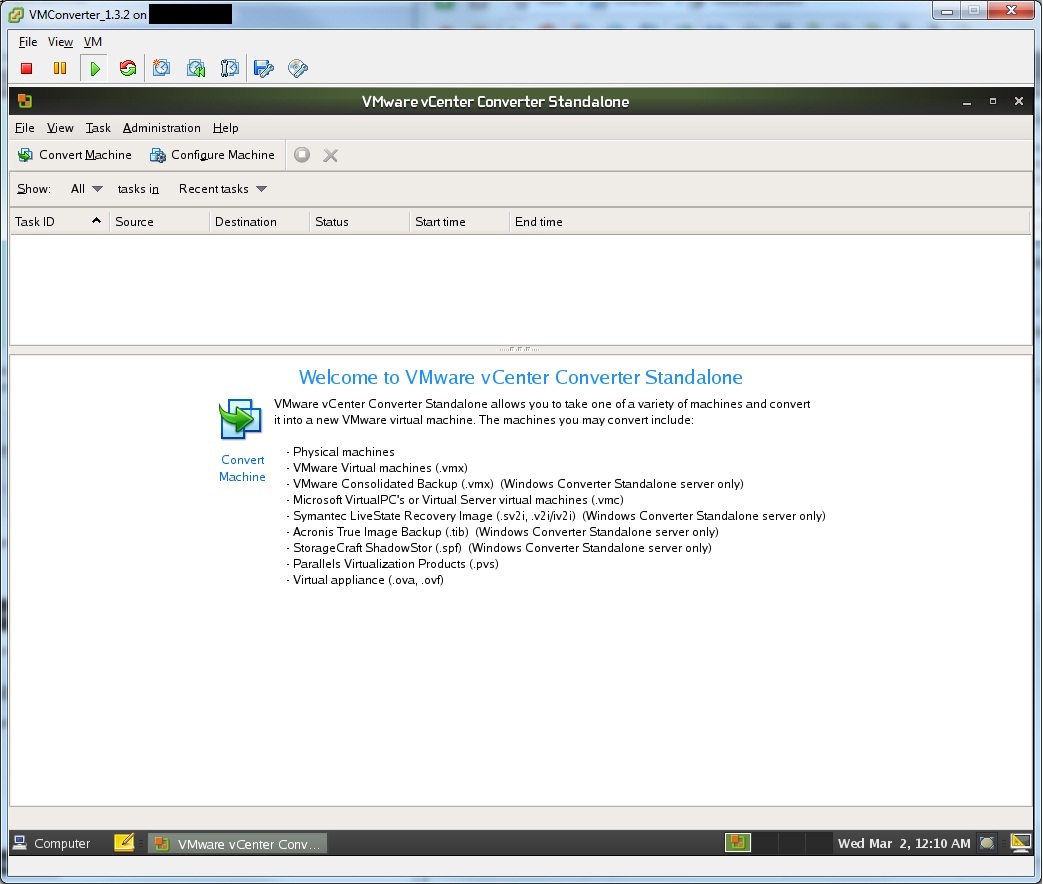Last year, Duncan Epping made a post about building a VMConverter Virtual Appliance using suse studio. It was a complete walk-thru from beginning to end on how to build the virtual app. I built one and it worked flawlessly. I used that little booger to run numerous P2V (Physical to Virtual) and V2V (Virtual to Virtual) conversions. The unfortunate thing is that when I left my former employer, I didn’t keep the VM, and now I have a need to recreate it.
Well never fear…. I fired up Duncan’s page and figured I’d just redo this all over again. Well… a lot has changed in a year. 🙂
I’m going to borrow from Duncan’s page and show the changes that I ran into, and what I did to resolve those challenges.
- Go to susestudio.com and open an account (Or you can log in with a google or facebook account)
- Click “Create New Appliance”
- Select “GNOME Desktop” and click “Create Appliance”
- Change the name of the appliance to something that makes a bit more sense…
- Under the “Software Tab,” add “File Roller”, “GCC”, and “libpng12-0”. These files are needed to install VMware tools and VMConverter.
- Go to the “Configuration Tab” and click on “Appliance”
- Increase the memory to 1024MB for a better running appliance
- Download VMware Converter Standalone for Linux and add it as a file in the “Overlay Files” tab
- When uploading is finished select a folder where the tar.gz file should be extracted, I picked “/vmconverter”
- Click on the “Build” Tab, select “OVF” (for ESX environments) and wait for it to complete.
I found that if I chose (.vmdk) for the file format, that the file format was built for VMware Workstation and not the virtual infrastructure. I would then have to run vmconverter to import this new virtual app into my vCenter. Using the OVF format, I can just import it directly.
- Once imported in vCenter, power up the new VM.
- Install VMware Tools: Right click “VM” from the menu bar, and “Install/Upgrade VMware Tools”
- Open a Gnome Terminal session within the VM and type:
su - cd /media/VMware Tools tar -C /tmp -xvf /tmp/vmware-tools-distrib/vmware-install.pl*Stick to the defaults
cd /vmwconverter/vmware-converter-distrib ./vmware-install.pl*Again, stick to the defaults.
By default, the Video displays at “800×600”. That just doesn’t work for me. Here’s what I did to adjust the video settings to 1024×768.
Since Suse 11.3 doesn’t include SAX2 (which is what I used before to edit the resolution), I had to edit the monitor, screen and device sections from the appropriate files located in /etc/X11/xorg.conf.d.
Here’s what my current files look like:
# /etc/xorg.conf.d/50-device.conf ###################################### Section "Device" Identifier "Default Device" BoardName "VMWARE0405" Driver "vmware" VendorName "VMWare Inc" EndSection # /etc/xorg.conf.d/50-monitor.conf ###################################### Section "Monitor" Identifier "Default Monitor" HorizSync 1-10000 VertRefresh 1-10000 ModelName "LCD" VendorName "VMWare" Option "PreferredMode" "1024x768" ModeLine "1024x768" EndSection # /etc/xorg.conf.d/50-screen.conf ###################################### Section "Screen" Identifier "Default Screen" Device "Default Device" Monitor "Default Monitor" DefaultDepth 24 SubSection "Display" Depth 15 Modes "1024x768" EndSubSection SubSection "Display" Depth 16 Modes "1024x768" EndSubSection SubSection "Display" Depth 24 Modes "1024x768" EndSubSection SubSection "Display" Depth 8 Modes "1024x768" EndSubSection EndSection

At this point, as Duncan said, “your appliance is good to go.” You can now assign it an IP and hostname and use it everywhere in your virtual infrastructure.



